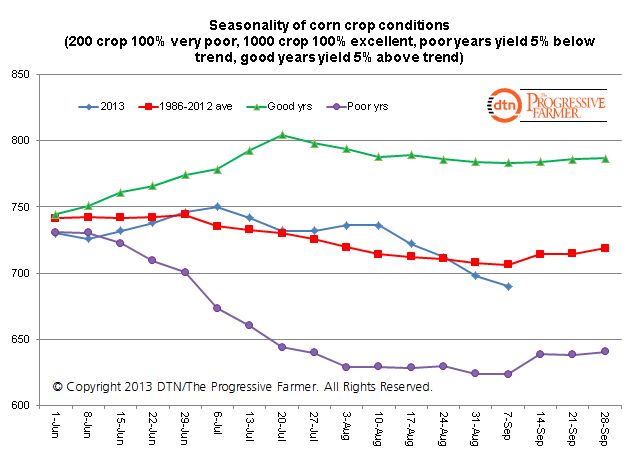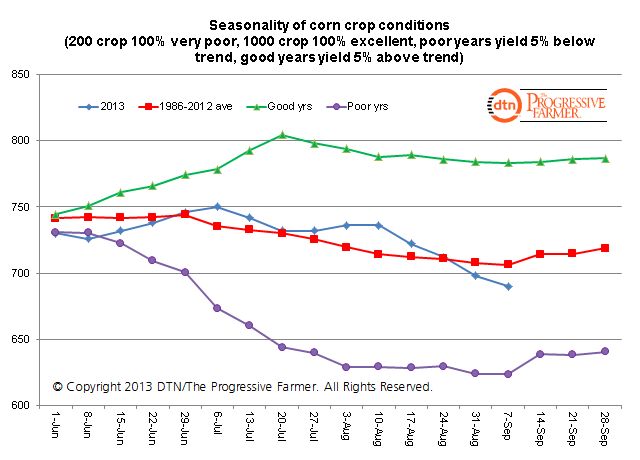Fundamentally Speaking
Seasonal Changes of Corn Crop Conditions
A steady decline in U.S. corn crop conditions over the past six weeks has the trade lowering their projections for the 2013 yield though crop conditions do tend to decline as the growing season progresses.
Though the corn crop managed to get through its critical pollination phase in decent shape, the very dry weather over much of the Corn Belt during August into September has probably pushed the crop to maturity at the expense of test weight.
P[L1] D[0x0] M[300x250] OOP[F] ADUNIT[] T[]
Using our usual ranking system where we weight the crop based on the percent in each category and assign that category a factor of 2 for VP, 4 for P, 6 for F, 8 for G, and 10 for EX and sum the results, this year’s September 7 rating was 690.
This is higher than seen the prior two years but lower than the comparable figures for the period 2006-2010.
Crop conditions for a variety of reasons usually decline as the growing season progresses though in some years they actually go up.
This graphic shows corn crop condition from weeks 22 through 39, roughly corresponding to the first of June to the end of September 2013, the 1986-2012 average, poor years where final yields are 5% or more below trend and good years where final yields are 5% or more above trend.
This year’s September 7 rating is lower than the 1986-2012 average of 706 and well below the 783 seen in good years though substantially higher than the 623 September 7 reading for poor years.
This year the crop ratings declined by 5.5% between June 1 and September 7 and that is a larger decline for that time span than seen for the 1986-2012 average of 4.7%.
In good years, the rating averages a 5.2% increase between those two dates while bad years show a 14.7% decline.
(KA)






Comments
To comment, please Log In or Join our Community .